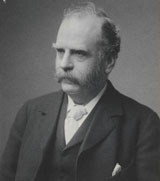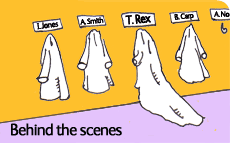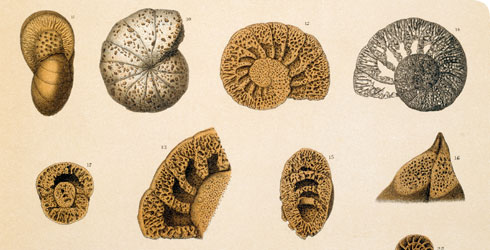Findings
During the voyage, specimens were sent back to Edinburgh from Bermuda, Halifax, the Cape, Sydney, Hong Kong and Japan.
Professor Wyville Thomson (the scientist who initiated the expedition) wrote in his report: ‘the contents of the ship … consisted of 563 cases, containing 2,270 large glass jars with specimens in spirit of wine, 1,749 smaller stoppered bottles, 1,860 glass tubes, and 176 tin cases, all with specimens in spirit; 180 tin cases with dried specimens; and 22 casks with specimens in brine.’
Analysing all of this material was going to be a huge job.
A huge task

John Murray, who organised the publication of the Challenger Reports
Thomson set up an office in Edinburgh to collate data, send biological specimens to specialist scientists and supervise publication of the reports. This took much longer than the voyage itself.
Thomson estimated that the results would take up 15 volumes and be published within 5 years. They actually ran to 50 large volumes, with a total of 29,552 pages, and the final volumes weren’t published until 1895, 19 years after the end of the expedition.
Thomson himself died in 1882 and John Murray, a junior naturalist from the voyage who later became a famous scientist, took over his work.
Disputes
Some people thought that only British scientists should work on the specimens from the Challenger voyage, but Thomson insisted on sending them to the best scientists, irrespective of nationality. Scientists from all over the world still examine them today.
Thomson had a more difficult battle with the Treasury who didn’t want to pay the growing cost of publishing the reports. They only agreed when Thomson’s successor, Murray, shamed them by threatening to finance the publication himself.
The end result
The final reports contain thousands of illustrations, both photographs and watercolours. Many of them were first drawn by J. J. Wild, the artist on board HMS Challenger, and later reproduced by dozens of artists, engravers and lithographers. Scientists studying particular specimens also produced their own art work.
The reports can now be found in the libraries of many major laboratories around the world. The collections from the expedition were sent to the Natural History Museum when John Murray died in 1914. Scientists still study them today as they include many type specimens (the specimen used to describe a new species).
Unfortunately the British Treasury was so shocked at the cost of the expedition that it did not finance another scientific project of this size for decades. Fortunately, other nations responded differently, and major oceanographic expeditions were carried out by the United States, Germany, Norway, Sweden, France, Italy and Monaco.
Scientists continue to discover more about the deep sea today.
Toolbox

Our fossil insect collection includes Rhyniognatha hirsti, the world's oldest fossil insect, dating back some 400 million years.
